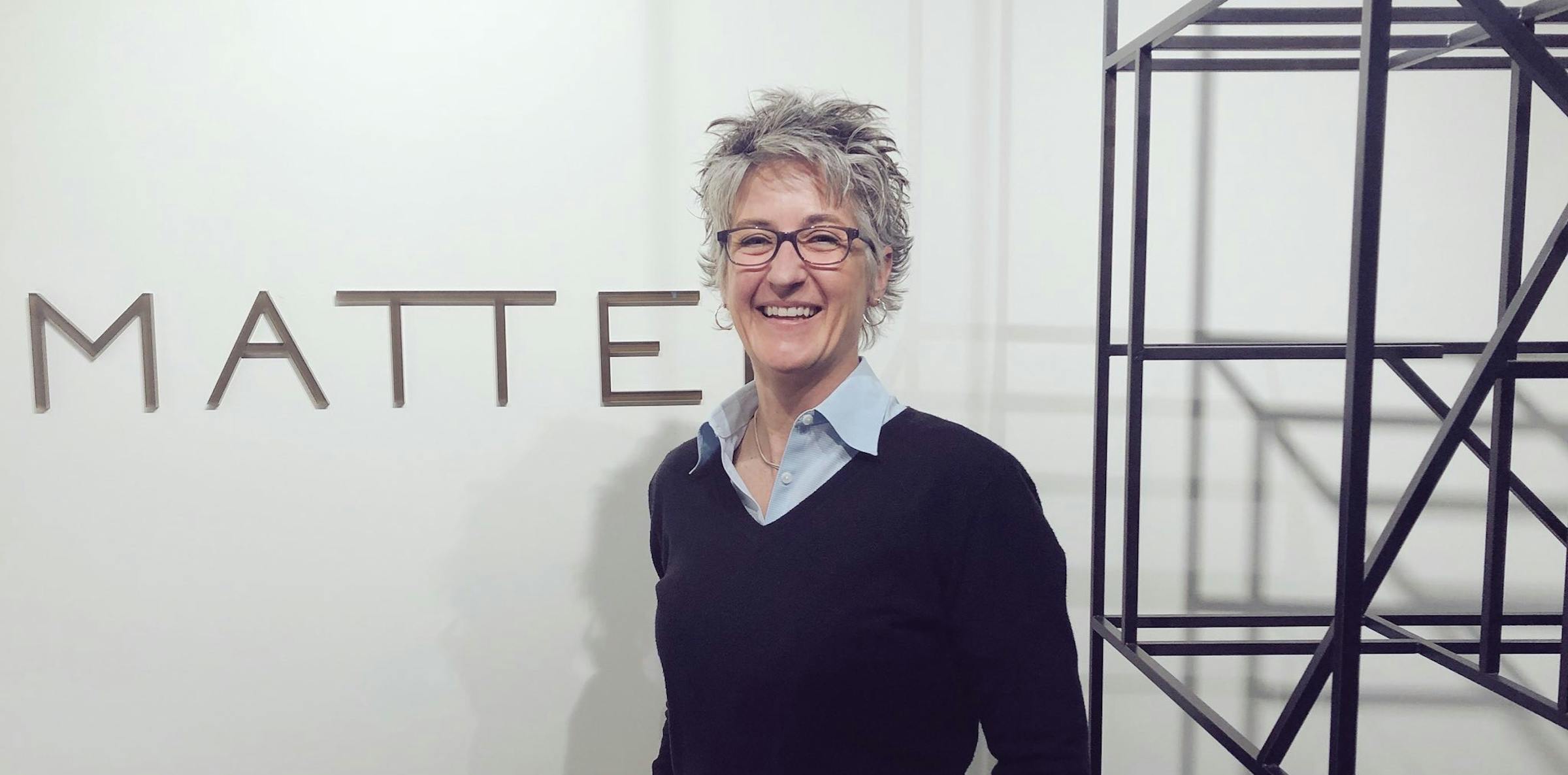Empowering people to participate in better health outcomes
An Interview with Evidation Health CEO Deb Kilpatrick
Exercise. Sleep. Social activity. We know that health is influenced by behavior. And yet companies across the healthcare industry struggle to quantify how a person’s behavior in the real world affects health outcomes.
Deb Kilpatrick, CEO of Evidation Health, is in the business of real world information. She joined us for Tales From the Trenches, where she talked about her journey from engineer to CEO of Evidation with Oak Street Health Chief Medical Officer Griffin Myers.
Evidation’s platform taps into connected devices to enable everyone who wants to participate in better health outcomes to contribute their individual data. But the startup’s true value is in its ability to turn this data into actionable and predictive information – grounded in rigorous science – that characterizes the relationship between everyday behaviors and health outcomes.
Under Deb’s leadership, the startup has raised $31 million and has ongoing collaborations to better understand how behaviors affect pediatric asthma, sleep apnea, neurological conditions, chronic disease and more.
We followed up with Deb to learn how Evidation is radically changing our understanding of everyday behaviors, and how individual people are at the center of it all.
Patient-controlled data is at the heart of the Evidation business model. How does this value come to life in practice?
Technically, we don’t give them control of their own data – they already, by default, have control over it! What we do is deploy our platform to enable them to use the data they control in “real life” outcomes studies across therapeutic areas. As a straightforward example, a diabetes patient who wears a smart watch, uses a connected scale or has a connected, continuous glucose monitor can consent to participate in Evidation studies where those datastreams are used in determining endpoints or surrogate measures associated with outcomes of interest. In some sense, what we are doing is bringing a clinical study ecosystem to them, where they are in their lives, and enabling them to participate in it via devices and data they already control.
Relative to other healthcare technologies, genetic technologies – and genetic biomarkers in particular – experienced rapid adoption following the Human Genome Project. In your conversation with Griffin, you predicted that digital biomarkers will be adopted even faster. How do you define digital biomarkers and why do you foresee faster adoption?
At Evidation, our efforts are all directed at linking real life patient behavior data to health outcomes, where that behavior data is obtained from connected devices, sensors, wearables, apps, etc. In our day to day work, this takes the form of prospective, virtual studies which evaluate product impact and identify behavior-driving outcomes – anytime, anywhere, at any scale. Part of this work involves developing and applying digital biomarkers which are analogous to molecular biomarkers: they are measurements reflecting status of a disease process (e.g. progression) – only now we are measuring patient behavior instead of patient biology. We believe that many, but not all, validated digital biomarkers will be further applicable as surrogate markers in therapeutics trials – they will substitute for clinically meaningful endpoints as a direct measure of how a patient feels, functions and/or survives on therapy. As an example, a digital mobility score using passively obtained tracker data from a patient’s real life could potentially replace clinic-based treadmill scores in a trial evaluating a new COPD drug or device.
There are two main reasons I believe digital biomarker application in the ecosystem will be faster than what we experienced with molecular biomarkers. First, patient sampling is just more efficient in the digital biomarker problem. The speed of early molecular biomarker work in cancer relied heavily on the existence of tumor banks to provide curated patient samples, and without that same source, biomarkers in other disease states were significantly slowed by having to run prospective trials to obtain relevant tissue samples. Studies for digital biomarker development and validation can be run virtually, without brick and mortar, using continuously flowing data at any scale.
Secondly and as importantly, the data science and computational capabilities we had in the last decade are simply dwarfed by what we have today for managing and making sense of massive datasets in complex disease states. (Read more from Deb on precision medicine.)
Clinical trials have historically and consistently lacked diverse representation. This problem is one that many organizations want – but too often fail – to address. But the people Evidation collects data from are, in your words, “shockingly America.” What strategies do you use to ensure diverse representation in your research?
The reason I used the word “shockingly” is because we find that patients in our studies (1) can be more broadly representative of the population versus those in traditional clinical trials at academic medical centers, and (2) are often not who people assume would participate in trials using wearables and connected devices. As an example of the former point, in one of our recent randomized trials assessing digital intervention impact on medication adherence, we had more female versus male enrollment in both arms, and we had an overall African American enrollment of 25%. To the latter point, we are currently executing randomized trials of digital health tools for diabetes management solely focused in the Medicare Advantage population in the US (older Americans do indeed use technology, a lot!).
As for strategies we employ to ensure we get a diverse population to enroll, I refer to what I said earlier – we are bringing a clinical study ecosystem to individuals where they are in their lives, not asking them to go find it in order to participate in it. It’s sort of like the newest food truck trends – a new generation of chefs are enabling all kinds of consumers to eat healthy, gourmet food as part of their day to day life, without requiring them to walk into a high-end restaurant. Convenience is a powerful product feature that can ensure more diverse participation in a market ecosystem.
The conference you co-founded, Medtech Vision, highlights women leaders in the medical technology industry. Why is important to have women in leadership positions, specifically in healthcare technology?
To me, diversity is a tactical element of a broader competitiveness strategy. I can argue this at a team level, a company level, a sector level or a national level. But if we’re in it to win it for patients in the healthcare industry, we’d better all employ tactics to ensure we do our best thinking and develop our best solutions on their behalf. When Amy Raimundo and I had the original conversation about what would become MedtechVision, it was all about putting spotlights on the best thinkers, the deepest domain experts and the newest ideas in the medtech sector – and we just did not think it was possible to achieve that without women experts sharing the stage.
One of the biggest challenges Evidation faced early on is explaining what the company does. What advice do you have for other entrepreneurs with similarly complex products or business models?
I think for new business models, first-in-market companies or really novel products, entrepreneurs have to produce – and make visible – tangible use cases of what you can do and where it has market value. In evidence-based medicine where we have, in part, relied on evidentiary standards to define market potential, this means peer-reviewed presentations and publications are still really important proof-points. Since the very early days of Evidation, we have continuously focused on this. The good news for startups in the digital era of medicine is that rigorous evidence of clinical and economic impact can get into the public domain more quickly than ever before.
Evidation has worked with all kinds of companies throughout the healthcare industry. From your experience, what are the keys to a successful collaboration between businesses?
For our most successful collaborations and partnerships, there is a clear “North Star” that we are all aligning our relationship activities around. For example, our partnership with Sanofi aligns around the importance of quantifying the impact of various real-world factors, including patient behaviors, to more completely understand therapeutic outcomes.
I like the North Star metaphor because it reminds everyone involved that there is a common focal point – a common place we are all trying to get to with the work.
You advised mentees to establish a clear objective for their mentor relationships. What advice do you have for both mentors and managers on how they can help people grow professionally?
I have pretty simple beliefs regarding the responsibilities of both parties in a really productive mentoring relationship. One you have heard already, which is that the mentee needs to have a clear objective in mind, and that objective can change over time. On the other side, great mentors are willing to genuinely put energy into helping that person meet that objective – and they are honest about it when they cannot, for whatever reason. Beyond these things, the most successful mentoring relationships I have had all involved a great deal of honesty without ever losing mutual respect – even in tough conversations.
Our next Tales from the Trenches is this coming Wednesday, January 17. AVIA Co-founder Eric Langshur will interview WiserCare Co-founder Ted Meisel about his entrepreneurial journey. Learn more and RSVP.



